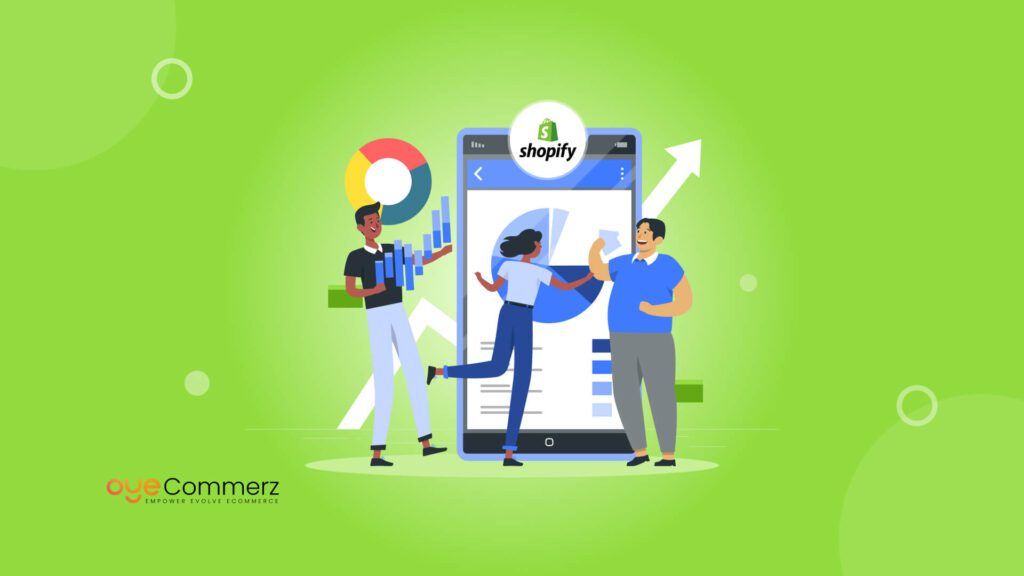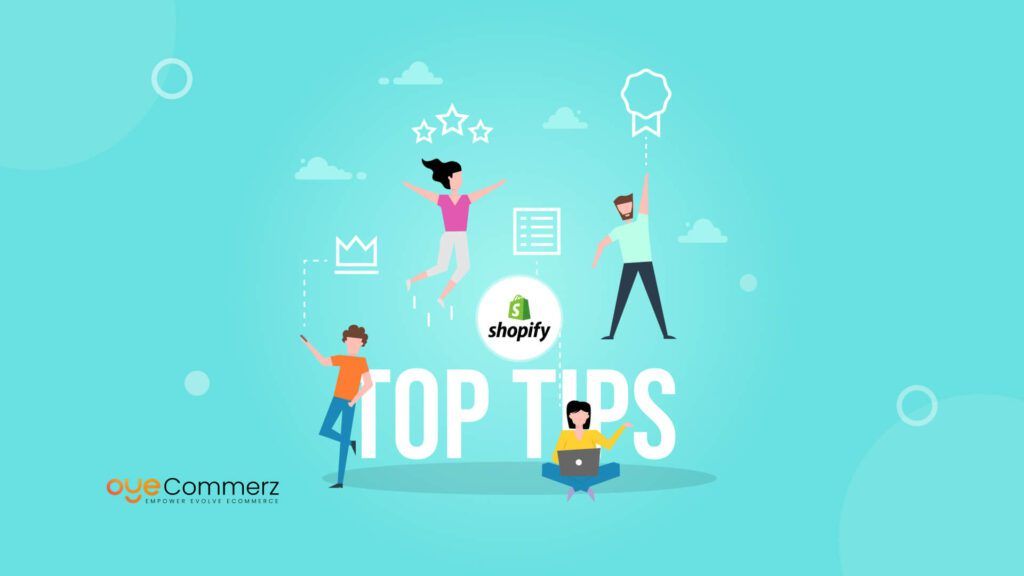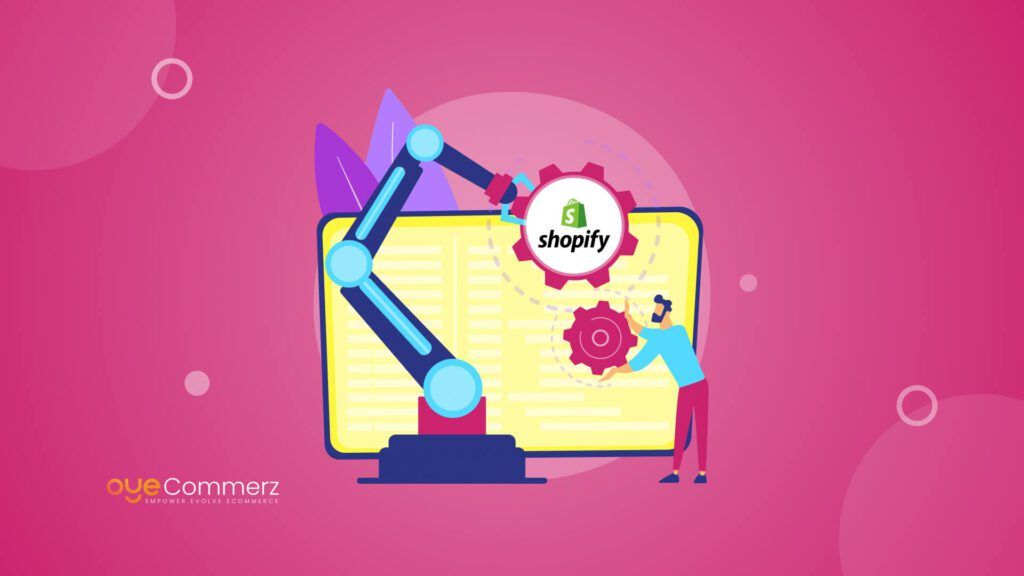Choosing the right platform is crucial for enterprise-level businesses aiming to scale efficiently in market. As customer expectations evolve and technological advancements continue, companies require platforms that offer both flexibility and innovation. While THG Ingenuity is a solid eCommerce solution, it often lacks the agility and scalability required by modern retailers, particularly those looking to expand into more competitive markets. For this reason, many enterprises are migrating from THG Ingenuity to Shopify, a platform that has gained significant traction due to its flexibility, extensive app ecosystem, and enterprise-focused features like Shopify Plus.
Shopify, with its flagship offering Shopify Plus, has gained significant traction among large enterprises due to its robust capabilities. With over 1.75 million businesses globally and more than $79 billion in Gross Merchandise Volume (GMV) annually, Shopify is a proven platform capable of scaling with large businesses. These impressive statistics underscore Shopify’s ability to meet the demands of enterprises, making it an attractive alternative for businesses currently using THG Ingenuity.
In this guide, we will walk you through a comprehensive, step-by-step approach to migrating from THG Ingenuity to Shopify. By following this roadmap, your business can maintain operational continuity, optimize performance, and deliver a superior customer experience as you transition to a more scalable and flexible platform.
Table of Contents
ToggleThe Difference Between THG Ingenuity and Shopify
Before we dive into the migration process, it’s important to understand the core differences between THG Ingenuity and Shopify. While both platforms cater to enterprise-level e-commerce businesses, their functionality and ease of use differ significantly, which can impact both operations and customer experience.
THG Ingenuity
THG Ingenuity positions itself as a full-stack platform designed for larger enterprises seeking to handle everything from supply chain logistics to digital marketing. It comes with a broad set of features, including product fulfillment, website management, and customer data analytics. However, for many businesses, the platform can feel too rigid, particularly when it comes to customization and third-party app integrations. These limitations make scaling or pivoting into new markets more challenging than with more flexible solutions like Shopify.
Pros of THG Ingenuity:
- Strong logistics and supply chain capabilities
- End-to-end solution (e.g., inventory management, shipping, marketing)
- Extensive global reach
Cons of THG Ingenuity:
- Limited flexibility for customization
- Challenges with third-party integrations
- Higher costs for additional functionalities
Shopify
On the other hand, Shopify, especially Shopify Plus, offers unparalleled flexibility, making it a favorite for businesses looking to scale. Its vast app ecosystem allows for seamless integrations, whether it’s adding new marketing tools, custom apps, or syncing your store with an existing CRM. Furthermore, Shopify’s focus on user experience (UX/UI) makes it easier for non-technical teams to manage and optimize their e-commerce store without a steep learning curve.
Pros of Shopify:
- Extensive app marketplace with over 7,000 apps
- Flexible and customizable themes
- Strong focus on customer experience and scalability
- Easy-to-use platform with robust documentation and support
- Lower long-term costs due to the ability to scale as needed
Cons of Shopify:
- May require third-party apps for more advanced features
- Less control over specific logistics compared to THG Ingenuity
Given these distinctions, it’s clear why more companies are making the platform change from THG Ingenuity to Shopify. Now, let’s explore how to migrate efficiently without compromising your business operations.
Step-by-Step Guide to Migrating from THG Ingenuity to Shopify
Now that we’ve covered the key differences between THG Ingenuity and Shopify, it’s time to dive into the migration process itself. Below is a detailed step-by-step guide to help you migrate from THG Ingenuity to Shopify while ensuring minimal disruption to your business operations. Each phase is critical to achieving a smooth transition and maximizing the benefits of your new platform.
Step 1: Planning and Preparation for Migration
A successful eCommerce migration from THG Ingenuity to Shopify requires careful planning and execution. Unlike simple platform changes, this process involves detailed coordination between technical, marketing, and operational teams. To ensure a smooth transition, follow these essential steps.
1.1 Evaluate Your Business Needs and Goals
The first step in any migration is evaluating your business needs and future goals. A thorough assessment of your current eCommerce setup is essential to identify any gaps or limitations. Begin by asking questions such as:
- What functionalities do you require from Shopify that are currently lacking in THG Ingenuity?
- What challenges does your current platform present, particularly regarding scalability, customization, or performance?
- How will migrating to Shopify impact your workflows, team operations, and the customer experience?
Answering these questions will help clarify the critical features your new Shopify store will need. For example, you may require advanced SEO tools to boost search rankings, or third-party apps for seamless order fulfillment. Having a clear understanding of your business needs will help you determine the best Shopify features to integrate, ensuring the new platform supports both your current operations and future growth.
1.2 Assemble a Cross-Functional Migration Team
Successful migrations require a collaborative effort from multiple departments. Establishing a cross-functional team ensures that all aspects of the migration are addressed, and potential issues are identified early. Key roles in the migration team should include:
- IT/Development: Responsible for managing technical aspects, ensuring that the migration is executed without disruptions, and integrating necessary systems like ERPs or CRMs.
- Operations: To ensure that business continuity is maintained during the transition. This team will handle logistics and ensure that order fulfillment processes are uninterrupted.
- Marketing/SEO: This team will ensure that your branding, design, and SEO efforts are not disrupted, and they will assist in optimizing the Shopify store’s search engine performance.
- Customer Service: They will help manage customer queries, support issues, and ensure smooth communication with customers during the migration process.
A dedicated, well-coordinated migration team will streamline communication, prevent delays, and ensure all critical areas are addressed throughout the migration.
1.3 Backup Data and Establish Key Performance Indicators
Data integrity is a cornerstone of a successful migration. Before making any changes, back up all critical data from your current THG Ingenuity platform. This includes:
- Product details and descriptions
- Customer information
- Sales history and transaction data
- SEO metadata and URLs
In addition to backing up your data, it’s essential to establish Key Performance Indicators (KPIs) to measure the success of the migration. Common metrics to track include:
- Site performance: Loading speed and uptime before and after migration.
- Conversion rates: Compare conversion rates pre- and post-migration to gauge the effectiveness of the new platform.
- SEO rankings: Monitor changes in keyword rankings and organic search traffic.
- Customer feedback: Collect insights on customer satisfaction and engagement.
By setting clear KPIs, you’ll be able to assess whether the migration to Shopify is delivering the expected improvements in performance, customer experience, and operational efficiency.
Step 2: Data Migration and Platform Integration
Once your planning phase is complete, the next step is executing the technical migration from THG Ingenuity to Shopify. This phase involves transferring all your critical data, ensuring integrations are maintained, and workflows continue to operate seamlessly.
2.1 Exporting Data from THG Ingenuity
The first step in the migration process is to export the necessary data from THG Ingenuity. This includes business-critical information such as:
- Product Catalogs: Product details, including descriptions, images, and SKUs, must be carefully exported.
- Customer Information: Ensure GDPR compliance by securely exporting customer data, including personal details and order history.
- Sales History: Include transaction data, sales figures, and any other historical data that will be necessary for reporting and analysis.
- Marketing Assets: Export images, videos, and other marketing assets to ensure they’re available on your new Shopify store.
Accurate data transfer is essential in this step. Incomplete or erroneous data can lead to issues such as broken product listings, missing customer information, or inaccurate sales reporting on Shopify. Therefore, it’s crucial to validate the data before proceeding to the next step.
2.2 Importing Data into Shopify
After exporting data from THG Ingenuity, the next step is to import it into Shopify. Shopify offers a range of import tools, which include:
- Shopify’s Built-in Import Functionality: Shopify allows the upload of CSV files for product catalogs, customer information, and sales orders. It’s important to format the CSV files correctly to ensure smooth data importation.
- Third-Party Migration Apps: Apps like LitExtension or Cart2Cart can automate the data migration process, significantly reducing manual work and the likelihood of errors. These tools can facilitate large-scale migrations with minimal disruption.
One critical aspect of this process is maintaining SEO-friendly URLs. It’s crucial to ensure that URLs remain unchanged during the migration to prevent SEO ranking drops. Retaining consistent URLs is vital for preserving organic search visibility and ensuring traffic is directed to the correct pages.
2.3 Integrating Third-Party Apps
Another major advantage of migrating to Shopify is the platform’s extensive app ecosystem. Shopify offers seamless integrations with thousands of third-party apps, which can optimize your business operations. Some key integrations include:
- CRM Systems: Salesforce integration enables unified customer data management and streamlined marketing efforts.
- Marketing Platforms: Integrations with tools like MailChimp or Klaviyo help maintain email marketing campaigns during the migration.
- Order Fulfillment: Shopify’s integration with tools like ShipStation ensures efficient order processing and tracking.
- Analytics Apps: Integrating analytics platforms helps track performance metrics across sales, marketing, and customer engagement.
By integrating these third-party apps, you ensure that your business operations remain uninterrupted during the migration process. These integrations help maintain efficiency and provide a seamless transition to Shopify, allowing your business to operate at full capacity post-migration.
Step 3: Testing, Launch, and Post-Migration Strategy
Once your data migration is complete, it’s essential to thoroughly test every aspect of your new Shopify store to ensure a seamless customer experience and operational functionality. This step involves pre-launch testing, a careful final launch, and continuous post-migration monitoring to identify and resolve any issues promptly.
3.1 Pre-launch Testing
Before going live, it’s crucial to perform comprehensive testing to ensure everything functions as expected. Focus on the following areas:
- Site Functionality: Test critical features such as the shopping cart, checkout process, and user account creation. Ensure that customers can easily add products to the cart, proceed to checkout without errors, and complete purchases smoothly.
- Data Accuracy: Cross-check all product details, including descriptions, prices, and inventory levels, to ensure the accuracy and consistency of your migrated data. Any discrepancies at this stage could lead to customer dissatisfaction or operational challenges post-launch.
- Mobile Performance: Given that over 73% of eCommerce traffic comes from mobile devices, optimizing your Shopify store for mobile users is non-negotiable. Test the responsiveness of your website across various devices, ensuring that navigation, product display, and checkout processes function flawlessly on mobile.
3.2 Final Launch
Once all systems are thoroughly tested, the next step is to launch your Shopify store. It is advisable to adopt a soft launch approach, which involves making the store available to a select group of customers. This strategy minimizes risk by enabling real-time testing of the platform while keeping your THG Ingenuity store active as a backup. The soft launch provides an opportunity to identify and resolve any unforeseen issues before fully transitioning to Shopify.
3.3 Post-Migration Monitoring
Post-launch, it’s vital to monitor your store’s performance and make necessary adjustments. Focus on the following key areas:
- Site Speed and Performance: Use tools like Google PageSpeed Insights to track site speed and performance, ensuring that your Shopify store meets industry standards for load times. Slow pages can negatively impact both user experience and SEO rankings.
- SEO Rankings: With Shopify’s built-in SEO features and third-party integrations, track keyword rankings and organic traffic to ensure no ranking drops occur. Monitor the impact of the migration on your SEO performance and take corrective actions if necessary.
- Customer Feedback: Actively collect and address customer feedback to ensure smooth navigation, purchasing, and post-purchase experiences. Promptly resolve any issues that arise to enhance the customer experience and solidify your store’s reputation.
By following these steps, you ensure a successful migration and a seamless experience for both your business and customers. Continuous monitoring and optimization will also help drive long-term success and growth post-migration.
Ready to Migrate from THG Ingenuity to Shopify with Ease?
At Oyecommerz, we specialize in seamless Shopify migrations for businesses of all sizes. Our expert team ensures a smooth transition from THG Ingenuity, handling everything from data migration to custom Shopify store development. With our third-party app integration and post-migration support, we help you unlock the full potential of Shopify and scale your business efficiently.
Let us take the complexity out of your migration get in touch today and see how we can make your move to Shopify a success!
Also Read: Customer success stories of THG Ingenuity migration
Contact to Migrate your Site to Shopify Now
Conclusion
Migrating from THG Ingenuity to Shopify is a strategic decision that can unlock a wide range of benefits for enterprise-level businesses. From enhanced scalability to improved customer experiences, Shopify’s robust ecosystem offers the tools and flexibility necessary for growth. By following the comprehensive step-by-step guide outlined in this blog, you can ensure a seamless migration that minimizes downtime and operational disruptions. This guide covered several critical aspects of the migration process, including Planning and Preparation, Data Migration and System Integration, Testing and Launch, and Post-Launch Optimization. By thoroughly preparing, testing, and monitoring every aspect of the migration, your business will be well-positioned for long-term growth and success on the Shopify platform.
Frequently Asked Questions
Why should I migrate from THG Ingenuity to Shopify?
Migrating to Shopify offers many advantages, such as enhanced scalability, better customization options, and an extensive app marketplace. Shopify’s user-friendly interface, robust ecosystem, and flexibility allow enterprise businesses to improve operational efficiency, streamline workflows, and enhance the customer experience, all while supporting growth.
What are the first steps in migrating from THG Ingenuity to Shopify?
The first steps involve assessing your business needs and goals, forming a cross-functional migration team, and backing up critical data. You will need to evaluate what functionalities you require from Shopify and what challenges your current platform presents. Setting clear KPIs for tracking success and identifying any operational or technical roadblocks is also crucial.
How long does the migration process from THG Ingenuity to Shopify take?
The migration timeline can vary depending on the complexity of your store and the amount of data being transferred. On average, enterprise migrations can take between 4 to 12 weeks. This includes data migration, design development, system integrations, and testing to ensure a smooth transition.
How can I ensure data integrity during the migration?
Ensuring data integrity involves carefully exporting all relevant data from THG Ingenuity, including customer information, product catalogs, and sales history. During the import process into Shopify, you should use Shopify’s built-in import tools or third-party migration apps. It’s essential to test the accuracy of data once it has been migrated to Shopify, ensuring that all details, such as prices and inventory levels, are correct.
Can I integrate third-party apps into Shopify after migration?
Yes, one of the major benefits of migrating to Shopify is its ability to seamlessly integrate with thousands of third-party apps. This includes integrations with CRM systems, marketing platforms, analytics tools, and order fulfillment apps. Shopify’s API-first architecture allows for easy connections to various business systems and applications, optimizing workflows and providing the tools your business needs to succeed.



